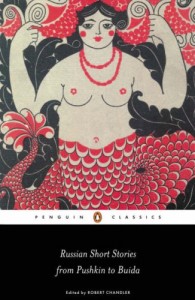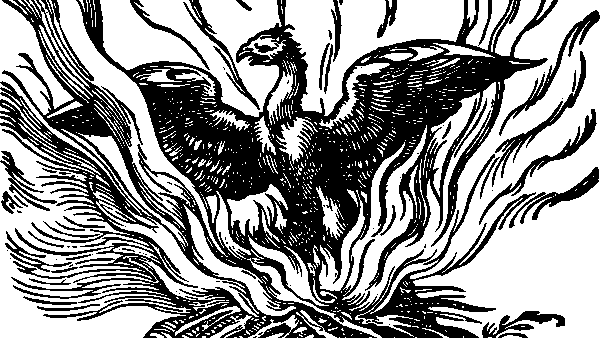Continuing my journey through Russian literature: if you want to see the introduction and reviews of earlier stories, click here.
Bobok by Fyodor Dostoevsky
Not my favourite Dostoevsky, this one. It’s quite a funny little story about a man who goes to a graveyard and hears the dead people talking to each other in their graves. There’s some good satire about people’s social pretensions – although you’d think it wouldn’t matter any more, the dead people are still very concerned with rank and status and impressing other people. But nothing really happens in the story, apart from some entertaining dialogue. If I’d read this first, I probably wouldn’t have tried anything else by him, and would have missed out on some of my favourite novels.
God Sees the Truth, But Waits by Count Lev Tolstoy
Interesting to read in the introduction that Tolstoy believed towards the end of his life that the only purpose of art was to provide moral instruction, and picked out this story as one of only two examples of his own work that he still considered “good art”. It concerns a merchant, Aksyonov, who is wrongly accused of murder and theft, and is sent to penal servitude in Siberia. Twenty-six years later, the man who really committed the crime arrives in the same prison, and Aksyonov has to decide whether he wants to take vengeance or to forgive. Given what I said about moral instruction, you can probably guess which path he takes. I don’t really agree with Tolstoy that “good art” has to instruct in such an obvious way, but still I liked this story and the message conveyed by its ending.
The Steel Flea by Nikolai Leskov
The story uses the “skaz” style, in which the story is told through a particular character and using his own speech patterns, even though it’s in the third person. So there are lots of malapropisms and language jokes here, along with a story about Russian artisans trying to out-craft their English counterparts. The English have devised a dancing steel flea so small that its movements can only be seen through a “nitroscope” (microscope), and the Russians try to outdo them by putting shoes on the flea. The malapropisms must have been hard to translate, and maybe they work better in the original Russian because they either irritated me or made me cringe here. And the story went on too long, with the Russian artisan Lefty going to England, coming back, getting arrested, etc etc. Quite funny in the end to say that Lefty had discovered a secret of gun manufacture that, if he could have communicated it to the Tsar, would have made the Crimean War take a different turn. But in general not a story or a style that I enjoyed very much.
In the Cart by Anton Chekhov
This reminded me of Turgenev’s The Knocking – another long cart journey along bad country roads, and the story rumbling on as slowly and sporadically as the wheels of the cart. It seemed like more of a character sketch than a story, as there’s no real progression or development or even a plot, apart from going to town and going back again. While the barrier is down at a railway crossing, Marya Vasilyevna has a dream that her father and mother are still alive, and her humiliating life as an isolated rural schoolteacher never happened. It’s quite a convincing depiction of character, and quite moving in a way, but I felt that something was lacking. I’ve read other stories by Chekhov that I liked a lot more than this one.
The Monster by Lidiya Zinovyeva-Annibal
The first female writer, appearing around 1900. I liked this story a lot, as it evokes a child’s experience growing up and losing some of her innocence. Vera collects some water from a bog, and loves to watch the little tadpoles growing. There are some wonderful, tender descriptions of the tadpoles “being born and swimming to freedom; lethargic, kind, soft all through and amusingly slow, despite the ardour of their broad, dapper, waving tails. They knocked awkward heads with a kind of trust and muddle-headedness; their muslin tails got entangled with each other. I loved them tenderly.” The tadpoles are innocent, like children, and Vera watches them becoming bigger but also inexplicably fewer. Then she sees the ugly grub that she calls the “monster”, and realises that it is eating the tadpoles. Her brother tells her “That’s nature. A normal person gets used to nature.” But Vera cannot get used to it, says “I don’t know what to make of it.” People tell her to throw out the grub, but she can’t. She can’t kill it. She watches helpless as it eats her beloved tadpoles. I thought this was a great depiction of how hard it is for a child to grow up and accept some of the things that adults see as “normal”. It’s easy to forget that a lot of things did not seem at all normal at one time, and this story is a really good reminder of that.




There is 1 comment
–
–
–
–
–
–
–
–
–
–
–
–
–
–
–
–
–
–
–
–